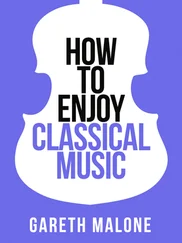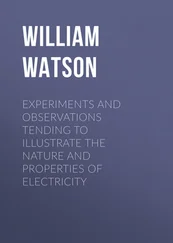Mark Changizi - Harnessed - How Language and Music Mimicked Nature and Transformed Ape to Man
Здесь есть возможность читать онлайн «Mark Changizi - Harnessed - How Language and Music Mimicked Nature and Transformed Ape to Man» весь текст электронной книги совершенно бесплатно (целиком полную версию без сокращений). В некоторых случаях можно слушать аудио, скачать через торрент в формате fb2 и присутствует краткое содержание. Год выпуска: 2011, Издательство: Perseus Books Group, Жанр: Старинная литература, на английском языке. Описание произведения, (предисловие) а так же отзывы посетителей доступны на портале библиотеки ЛибКат.
- Название:Harnessed: How Language and Music Mimicked Nature and Transformed Ape to Man
- Автор:
- Издательство:Perseus Books Group
- Жанр:
- Год:2011
- ISBN:нет данных
- Рейтинг книги:5 / 5. Голосов: 1
-
Избранное:Добавить в избранное
- Отзывы:
-
Ваша оценка:
- 100
- 1
- 2
- 3
- 4
- 5
Harnessed: How Language and Music Mimicked Nature and Transformed Ape to Man: краткое содержание, описание и аннотация
Предлагаем к чтению аннотацию, описание, краткое содержание или предисловие (зависит от того, что написал сам автор книги «Harnessed: How Language and Music Mimicked Nature and Transformed Ape to Man»). Если вы не нашли необходимую информацию о книге — напишите в комментариях, мы постараемся отыскать её.
Harnessed: How Language and Music Mimicked Nature and Transformed Ape to Man — читать онлайн бесплатно полную книгу (весь текст) целиком
Ниже представлен текст книги, разбитый по страницам. Система сохранения места последней прочитанной страницы, позволяет с удобством читать онлайн бесплатно книгу «Harnessed: How Language and Music Mimicked Nature and Transformed Ape to Man», без необходимости каждый раз заново искать на чём Вы остановились. Поставьте закладку, и сможете в любой момент перейти на страницу, на которой закончили чтение.
Интервал:
Закладка:
If rhythm and chords are each aspects of the sounds of our ganglies, then we should expect chords to cycle through their pitches on a time scale similar to that of the rhythm, and time-locked to the rhythm; the rhythm and chord should have the same time signature. For example, in an Alberti chord/rhythm pattern, one’s left hand on the piano might play the notes [ CG EG][ CG EG][ CG EG], where each set of square brackets shows a two-beat interval, and bold type and underlines indicate the emphases in the rhythm. One can see that the same two-beat pitch pattern and rhythm repeats over and over again. The pitch sequence and the rhythm have the same 2/4 time signature. It is much rarer to find chords expressed in a way that mismatches the rhythm, such as the following case, where the chord is expressed as a repeated pattern of three pitches—C-G-E—and thus the two-beat rhythm cycles look like [ CG EC][ GE CG][ EC GE]. In this case, notice that the first two-beat interval—the rhythm’s cycle—has the pitch sequence CGEC, but that the second one has, instead, GECG. The pitch cycle for the chord is not matched to the rhythm’s cycle. In real music, if the rhythm is in 2/4 time, then the chord will typically not express itself in ¾ time. Rhythm and chords tend to be locked together in a way that suggests they are coming from the same worldly source, and therefore the arguments in this chapter lead one to speculate that both rhythm and chords come from, or are about, our gangly banging sounds.
We can also ask which pitch within the expressed chord is most likely to be the one played on the beat. For human movers, the lowest-pitched gangly bang we make is usually our footsteps. For music and the rhythmic expression of chords, then, we expect that the pitch played on the beat will tend to be lower than that played between the beats. Indeed, chords are usually caressed starting on the lowest expressed pitch (and often on the chord’s tonic, which in a C major chord would be the C pitch). Chords are, again, like gangly rings, with the lowest pitch ringing on the beat.
Consider yet another attribute of human gait: our gangly bangings can occur simultaneously . Multiple parts of a mover’s body can be clattering at the same time, and even a single bang will cause a ring on both the banger and the banged. So we should expect that the auditory mechanisms evolved for sensing gait would be able to process gait from the input of multiple simultaneous pitches. Consistent with this, the pitches within a chord are commonly played simultaneously, and our brains can make perfect sense of the simultaneously occurring notes. Pitch modulations that are part of the melody, on the other hand, almost never occur simultaneously (as we will discuss later).
The idea that musical chords have their foundation in the pitch combinations heard in the banging gangly sounds of human movers is worth investigating further. However, there are a wide variety of phenomena concerning chords that one would hope to explain, and that I currently have no theoretical insights into how to explain based on the raw materials of our ganglies. The laboratory of Dale Purves at Duke University has carried out exciting research suggesting that the human voice may explain the signature properties of the diatonic scale, and one might imagine persuasive explanations for chords emerging from his work. In fact, people do often vocalize while they move and carry out behaviors, and one possibility is that chords are not about gangly bangs at all, but about the quality of our vocalizations. The advantage of looking to gangly bangs as the foundation for chords, however, is that banging ganglies are time-locked to footsteps, and thus intrinsically note-like. Human vocalizations, however, are not time-locked to our footsteps, and also lack a clear connection to the between-steps movements of our banging ganglies. If chords were driven by vocalizations, we would not be able to explain why chords are so wedded to the rhythm, as demonstrated above. If one can find chords in our ganglies, then it allows for a unified account: our banging ganglies would explain both rhythm and chords—and the tight fit between them.
Chords, I have suggested, may have their origins in the pitches of the complex rings given off by gangly human movers. Later in the chapter, I will suggest that the pitch modulations in melody, in contrast, come from the Doppler shifting of the envelope of those gangly pitches.
Choreographed for You
Choreography is all about finding the right match between human movement and music. I had always figured it wasn’t the music as a whole that must match people’s movement so much as it was just the rhythm and beat . Get the music’s bangs in line with the people’s bangs—that’s all choreographers needed to care about. But I now realize there’s a great deal more to it. A lot of what matters in good choreography is not the rhythm and beat at all. The melodic contour matters, too, and so does the loudness. (To all you choreographers who already know this, please bear with me!)
Why should musical qualities beyond rhythm and beat matter to choreography? Because there are sound qualities beyond our intrinsic banging gangly sounds that also matter for sensing human movers. For example, suppose you and I are waiting for an approaching train, but you are 100 yards farther up the tracks (toward the approaching train) than I am. You and I will hear the same train “gait” sounds—the chugs, the rhythmic clattering of steel, and so on—but you will hear the train’s pitch fall (due to the Doppler effect) before I hear it fall. Now imagine that I am wearing headphones connected to a microphone on your lapel, so that at my position along the tracks I am listening to the sounds you are hearing at your position along the tracks. The intrinsic gait sounds of the train would be choreographed appropriately with my visual perception of the train, because those gait sounds don’t depend on the location of the listener. But my headphone experience of the pitch and loudness contours would no longer fit my visual experience. The train’s pitch now begins falling too early, and will already approach its lowest going-away-from-me pitch before the train even reaches me. The train’s loudness is also now incorrect, reaching its peak when the train is still 100 yards from reaching me. This would be a deeply ecologically incoherent audiovisual experience; the auditory stream from the headphones would not be choreographed with the train’s visible movements, even though the temporal properties—the beat and rhythm—of the train’s trangly bangings are just as they should be.
Real-world choreography pays attention to pitch and loudness contours as well as gait sounds; and, crucially, which pitch and loudness contour matches a movement depends on where the listener is. Choreography for pitch and loudness contours is listener-centric.
The implication for musical choreography is this: in matching music to movement, the choreographer must make sure that the view point is the same point in space as the listening point. Good choreography must not merely “know its audience,” but know where they are. Music choreographed for you , where you’re sitting, may not be music choreographed for me , where I’m sitting. In television, choreographers play to the camera’s position. If movers are seen in a video to veer toward the camera, melody’s pitch must rise to fit the video, for example. In live shows, choreographers play to the audience, although this gets increasingly difficult the more widely the audience is distributed around the stage. (This is one of many reasons why most Super Bowl halftime shows suck.)
Читать дальшеИнтервал:
Закладка:
Похожие книги на «Harnessed: How Language and Music Mimicked Nature and Transformed Ape to Man»
Представляем Вашему вниманию похожие книги на «Harnessed: How Language and Music Mimicked Nature and Transformed Ape to Man» списком для выбора. Мы отобрали схожую по названию и смыслу литературу в надежде предоставить читателям больше вариантов отыскать новые, интересные, ещё непрочитанные произведения.
Обсуждение, отзывы о книге «Harnessed: How Language and Music Mimicked Nature and Transformed Ape to Man» и просто собственные мнения читателей. Оставьте ваши комментарии, напишите, что Вы думаете о произведении, его смысле или главных героях. Укажите что конкретно понравилось, а что нет, и почему Вы так считаете.












